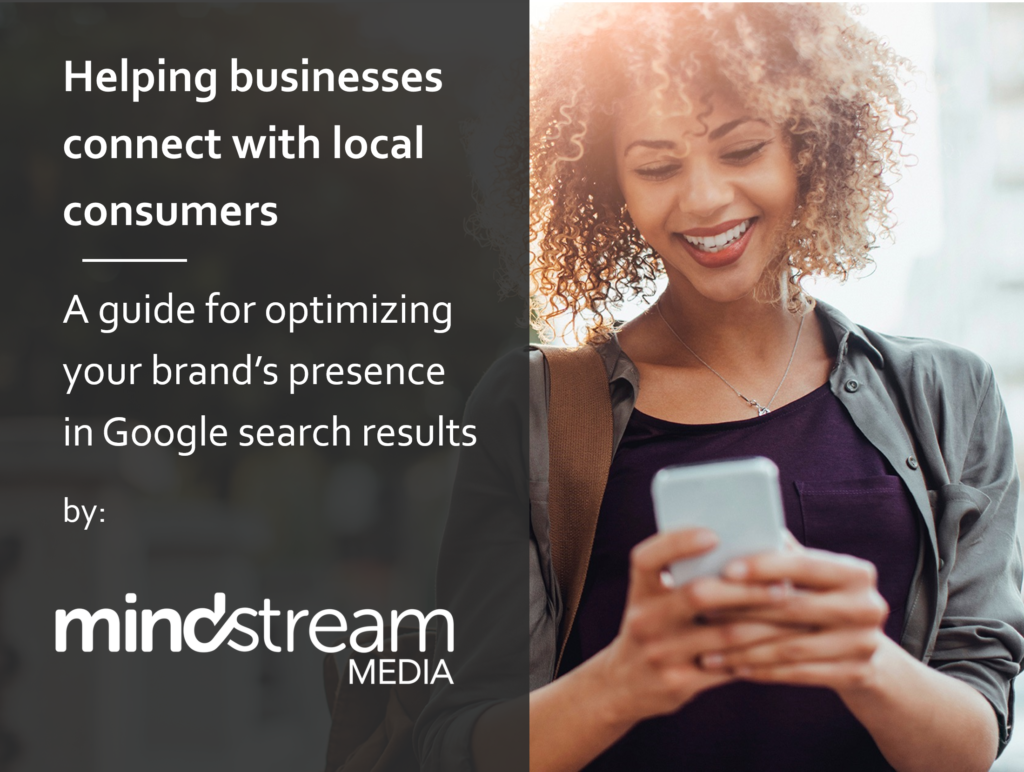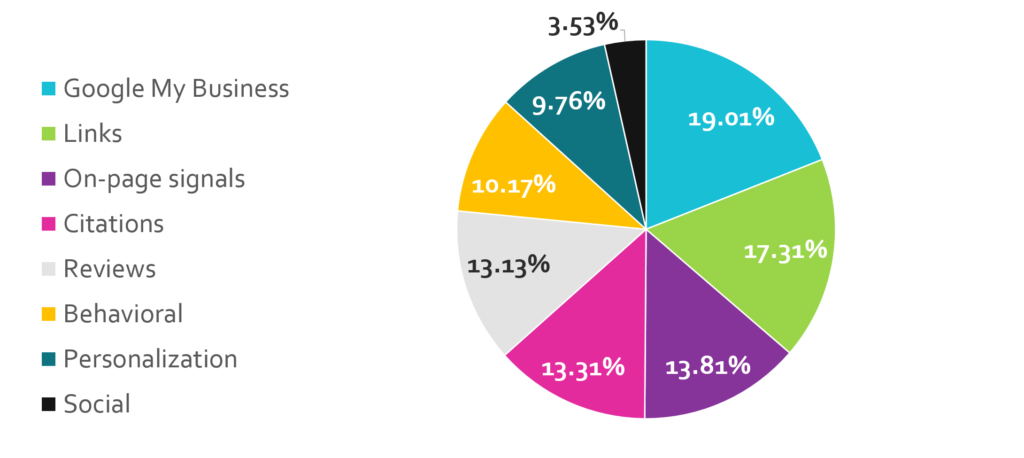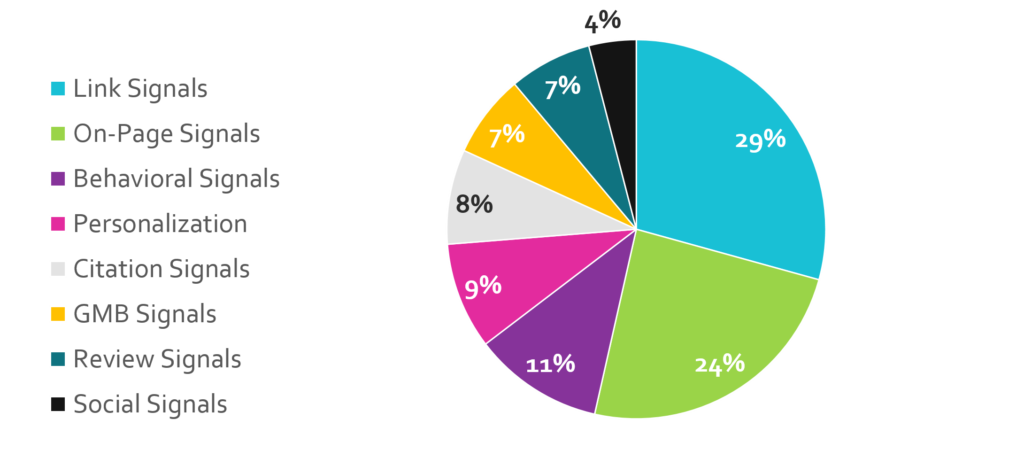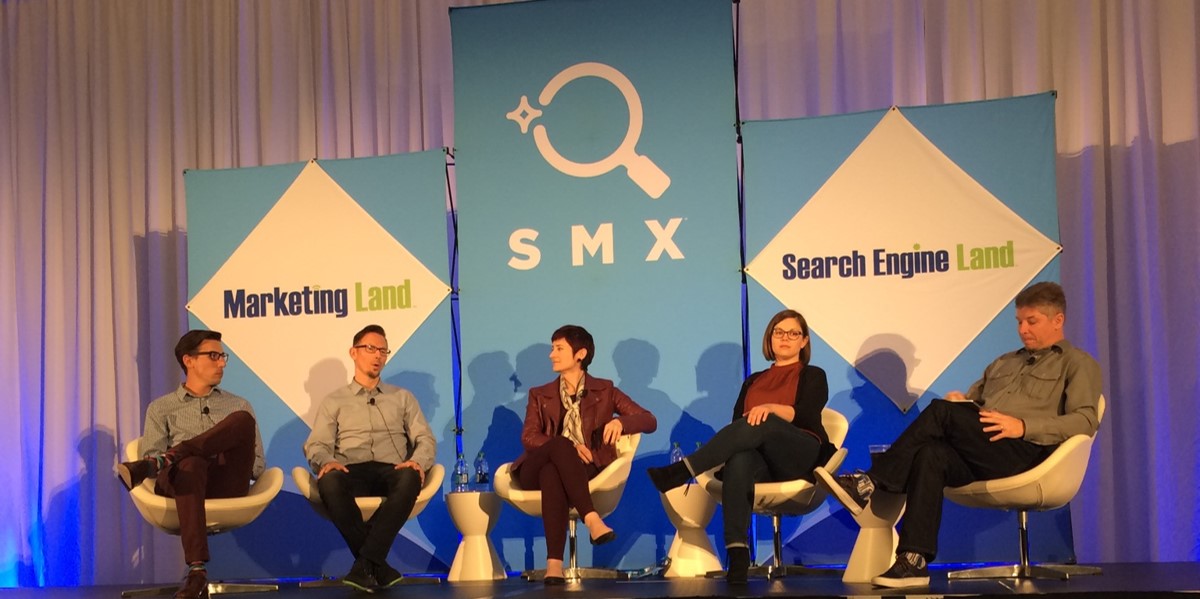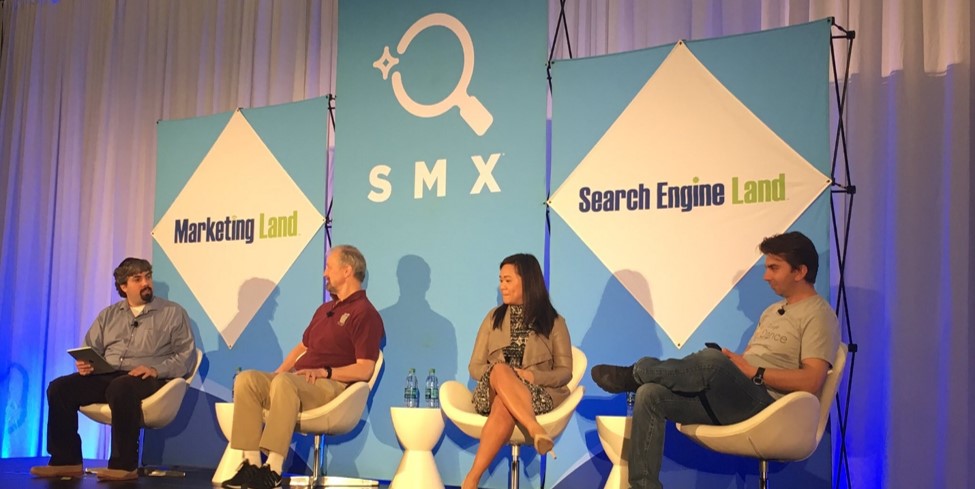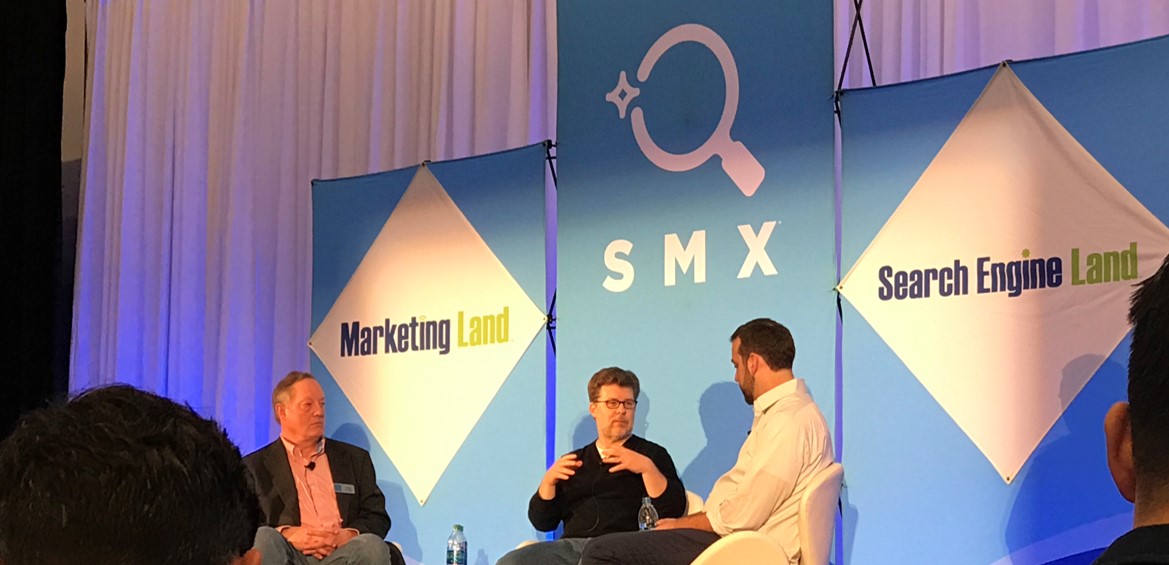Mindstream Media Group’s Allison Eckberg, Heather Ottenhausen and Stephanie Cheek are at Search Marketing Expo (SMX) West, a leading conference for search engine optimization (SEO) and search engine marketing professionals (SEM) since 2007. Mindstream’s search pros will be providing their analysis of each day’s most interesting sessions. Here’s their recap of Day One.
Session: The definitive guide to local search ranking factors
Speakers:
Dan Leibson | Vice President of Local & Product | Local SEO Guide
Andrew Shotland | President | Local SEO Guide
Recap by:
Heather Ottenhausen | Team Leader, Local Solutions | Mindstream Media Group
Mindstream’s local search lead, Heather Ottenhausen, dissects a study from Local SEO Guide to help brands determine which elements are the most important for ranking well in local search results.
The session focused on a study from Local SEO Guide that tried to determine the most important factors in local map rankings. The study looked at 35,000 businesses and about 100 variables, using PlacesScout to track rankings and working with the University of California–Irvine to help analyze the data.
The study found the following elements have a strong correlation with local pack rankings:
- Google My Business (GMB) authority – determined by a number of factors including the number and quality of reviews on the listing; whether target keywords were included in the business name, and if the listing had photos of the business (Andrew hinted at updating photos regularly can help increase local rankings).
- Website factors – the number of keywords and images on the GMB landing page, not content or quality, just the number of words and images.
- Backlinks – the number/percent of backlinks with the city in the anchor text and the number/percent of backlinks with the keyword in the anchor text.
- Citations – surprisingly, the least significant variable was citations (mentions of a business’ information on the web) based on ordinal position; eluding that citations may not be as important as we once thought.
You may ask “what does this all mean?” According to Shotland, it means the organic search algorithm is stronger than the local algorithm. He suspects that organic factors are trumping local ones because Google has dedicated a greater investment in the organic algorithm. This means that SEO factors with the most impact on search rankings will be the ones associated with organic authority – i.e., on-site elements like optimized webpages and backlinks.

Source: Dan Leibson, SMX presentation, “The Definitive Guide to Local Search Ranking Factors”
According to Liebson, and contrary to a prominent 2015 ranking study from Moz, it’s not all about proximity – relevance and prominence are still important. The search results above appear to be showing the closest pet stores, but a closer look reveals otherwise. If you reference the screenshot, the green dot was Liebson when he conducted the search, and the pink arrows are pet stores that are closer in proximity to his physical location, but they are not appearing in the search results. This study further proves that traditional SEO, relevance and prominence all play a major role in local search ranking.
So, based on Local SEO Guide’s findings, if you’re looking to prioritize items to boost local SEO rankings, choose website and backlink work – they’ll help your brand’s rankings in both local map pack and organic results.
Session: ETAs: Evolved text ads
Speaker:
Mark Irvine | Sr. Data Scientist | Wordstream
Recap by:
Allison Eckberg | SEM Specialist | Mindstream Media Group
Shifting from local search results to paid ads, SEM Specialist Allison Eckberg provides her insights into the importance of writing more conversational ad copy to match the way consumers search.
With the rollout of expanded text ads, marketers have had to update their ad copy strategies. We’ve been so accustomed to writing in a standard text era, that we now need improved tactics for writing ads in this new age of more conversational search.
In the past few years, the way people search has evolved. Today’s searchers are more likely to enter specific questions, rather than generic keywords, which has led them to use longer and more conversational search terms. The future of search marketing is trending towards more natural language and the way we write ad copy should reflect this trend.

Source: Mark Irvine, SMX presentation, “ETAs: Evolved Text Ads”
It’s crucial for us as marketers to focus our writing efforts on more than just “keyword stuffing” ad copy. In fact, keyword relevance is the least important factor of quality score for ads. Having high-quality ad copy and a relevant landing page experience is four times more important than merely having relevant keywords in your ad copy.

Source: Mark Irvine, SMX presentation, “ETAs: Evolved Text Ads”
As marketers, we need to adjust our frame of reference to write expanded text ads relevant to our clients and their customers. When writing ads, you have to consider how your audience is searching – and in today’s world it’s in a very conversational manner. The most common words in paid search ads are a brand’s keywords, which are typically nouns related to the business.
However, the most frequent words used in searches are not keywords – they’re prepositions, articles and conjunctions. Marketers need to embrace this search behavior and focus on more than just keywords when writing ad copy. Try including powerful pronouns in your ad copy. This will help personalize your ads and allow the copy to speak more directly to the target audience.
Three Most Powerful Pronouns for Ads
- Him/Her
- You
- We
Session: Speak to your audience in their own words
Speakers:
Brad Geddes | Co-Founder | AdAlysis
Recap by:
Stephanie Cheek | Paid Search Manager | Mindstream Media Group
Continuing on the topic from Allison’s recap, Mindstream’s Paid Search Manager, Stephanie Cheek, examines how we can take conversational ad copy a step further by writing copy that speaks to the specific way different consumers communicate.
With the release of demographic targeting on Google search, advertisers need to change the way they think about writing ads. We are accustomed to writing general ads that attempt to speak to everyone. Ultimately, these ads end up not really speaking to anyone.
Being successful in any advertising campaign is all about reaching the right consumer at the right time. With the ability to target by age and gender demographics, not only can we reach consumers at their moment of intent, but we can truly speak to them. This is a powerful combination.
To do this effectively, marketers need to understand there are differences in the way that individual demographics communicate. For example, there’s a big difference in how an average 18-year-old talks versus how an average 60-year-old talks. Advertisers need to start writing ads in the language of their target audience to compel them to click.
A good way to visualize this is by looking at the difference in communication styles between genders. A study on words and phrase correlation analyzed Facebook messages from 75,000 volunteers and highlighted some of the biggest differences in the way women and men tend to speak.
- Women talked about brands, while men talked about objects
- Women used emotional words, while men used more action-oriented phrases
- Women focus on how something makes you feel, while men focus more on what it can be used for
- When talking about significant others, women use “her” or “amazing,” while men use possessive terms like “my”
- Women were more encompassing and softer, while men swore more and used more direct language
Source: Brad Geddes, SMX presentation, “Speak To Your Audience In their Own Words”
When writing ads, it’s important to remember who the target audience is and make sure we “speak” to them. Getting away from generic ads that we’ve become accustomed to and writing ads that speak to our target audience can make all the difference in your results.
Want more? Check out our recap of Day Two and Day Three.

![[Guide]: 5 Steps to Optimize Your Brand’s Presence for Local Searches on Google](https://mindstreammediagroup.com/wp-content/uploads/2017/04/LSA-blog-header-image.png)
